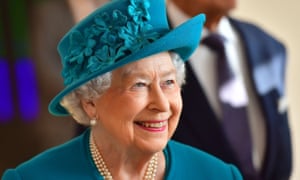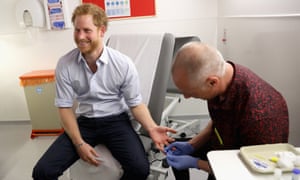
The Queen almost never takes to Twitter personally – just twice, it seems – but for her aides, social media has become as important as the walkabout, the garden party and her Christmas broadcast in promoting the monarchy brand.
Buckingham Palace and Prince Charles at Clarence House have recently advertised for digital communications officers to sustain their online presence and keep the royal palaces at the forefront of new technology.
Forget the court circular tucked away in “establishment” newspapers. Today’s announcements, and reports of audiences and ambassadorial hand-kissing, land in the Twitter feeds and Instagram timelines of followers almost before bowing guests have departed Her Majesty’s white drawing room. Images are swiftly pinged out into cyberspace – and without the sometimes unflattering filter applied by mainstream media.
For the royals, social media platforms are becoming a huge success. Prince Harry and his “mic drop” antics with granny and the Obamas, promoting the Invictus Games, went viral on Twitter. The prince was broadcast live on Facebook being tested for HIV, garnering enormous publicity and audience reach.

The Queen’s household is seeking to fill a maternity-cover position on its “fast-paced and dynamic team”. The job involves posting on the monarch’s Twitter, Facebook, Instagram and YouTube platforms; it offers a salary of £30,000 and the reward of “knowing your content will be viewed by millions” across the world.
The candidate must be “innovative”, with “creative flair” and good photography skills. The advert says: “The reaction to our work is always high profile, and so reputation and impact will be at the forefront of all you do. And having your work shared around the world will be the biggest reward.”
Currently, the @RoyalFamily Twitter account has 2.78 million followers and 24,500 tweets under its belt. The activities of Her Majesty and the Duke of Edinburgh feature alongside those of minor royals. To see the Duke of Kent learning about DNA sequencing or the Princess Royal opening imaging facilities at Edinburgh University, this is the place to be.
The Buckingham Palace team also coordinates @KensingtonRoyal, which has 826,000 followers keeping abreast of the engagements of the Duke and Duchess of Cambridge and Prince Harry.
Prince Charles, who recently advertised for someone to replace one of his two-strong digital team, is the social media royal pioneer. His @ClarenceHouse Twitter account, which has 605,000 followers, and his Instagram page, which has 191,000 followers, were royal firsts and are both enjoying 20% year-on-year growth in terms of followers.
For all three palaces, the aim is to build engagement, particularly with a younger audience and overseas. A lucky coincidence this week, for example, led to Prince Charles appearing on the official Instagram account of rock band Kasabian, when he inadvertently “photobombed” guitarist Serge Pizzorno eating lunch at a Somerset pub. It’s fair to say it is not Charles’s usual fan base.
The prince was also one of the first senior royals to try Google Hangouts: in 2014 he took part in a live webchat with young volunteers. His sons William and Harry had already tried out the technology, speaking from Buckingham Palace to young people from five Commonwealth countries.
Matt Navarra, a social media expert and head of content at The Next Web, gave his verdict on the royal platforms: “Very high quality imagery. Lots of video clips. Detailed descriptions in plain, interesting language for the widest possible audience appeal.”
He added: “In the last couple of years they have ramped up their social presence. I actually think they do a really good job.”
Prince Harry’s “mic drop” video was one highlight for Navarra. “Really innovative, fun stuff” designed to hook people in, he said. “They wouldn’t do themselves any harm to do a bit more like that.” But innovation, he added, could be high-risk for “a very, very high-profile account”.
The £30,000 salary, Navarra said, did not reflect the responsibility involved. “There is no room, absolutely no room, for error in that job. I used to work briefly at No 10 and you just cannot let things slip, or make a single error. If it’s the wrong image up, or a typo, or saying something that could be misinterpreted. And you have got to be pretty reactive.”
The Queen’s first personal foray into social media came in 2014, when she tweeted from the opening of the Information Age exhibition at the Science Museum in London, signing it “Elizabeth R”. She returned to Twitter last year to thank well-wishers on her 9oth birthday.
The monarch launched her own YouTube channel in 2007, after the concept of the video-sharing website was explained to her by, among others, her granddaughters princesses Beatrice and Eugenie. The channel launched with rarely-seen silent newsreel footage of the 1923 wedding of her parents, the future King George VI and Lady Elizabeth Bowes-Lyon.
In 2005, the Queen confessed, while conferring an honorary knighthood on Bill Gates, founder of Microsoft, that she had not yet used a computer. Since then she has gained a mobile phone – and an iPod, given to her by William, on which she reportedly listens to the Last Night of the Proms.
[“source-ndtv”] Techosta Where Tech Starts From
Techosta Where Tech Starts From
